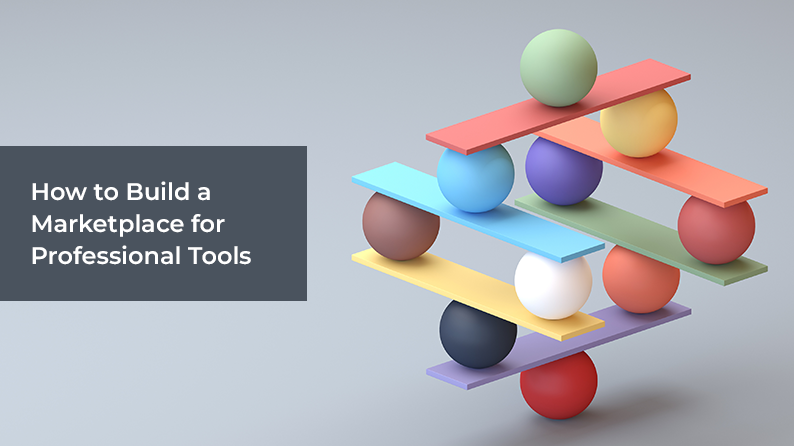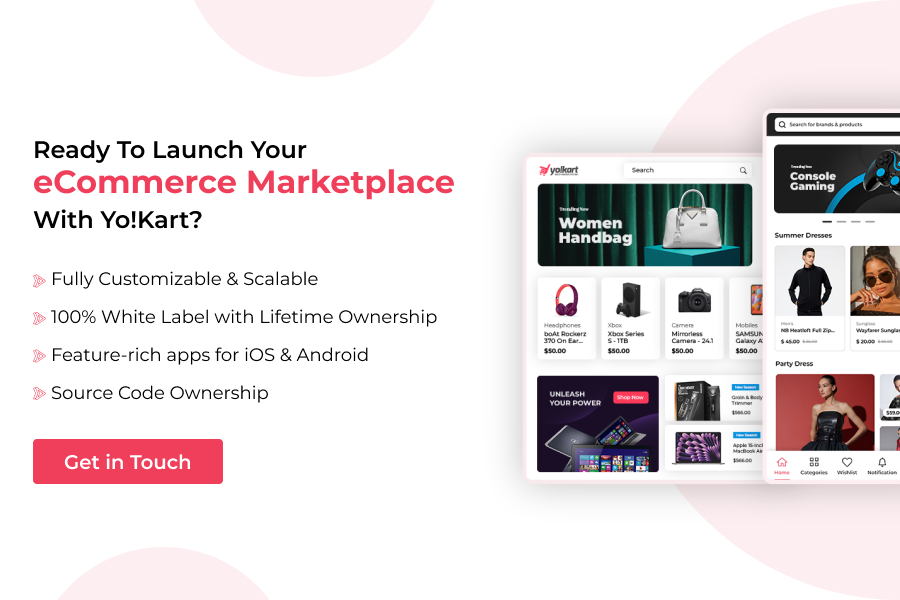Publishing Date 28th April, 2025
The professional tools market is undergoing a digital transformation. From heavy-duty construction gear to photography and medical tools, professionals across industries are increasingly looking for specialized equipment online. And with that comes an opportunity—launching a niche marketplace for professional tools.
If you’re wondering how to build a marketplace for professional tools, this guide breaks down everything you need to know. From understanding the market to choosing the right platform, we’ll help you go from idea to execution.
In a time when niche online shopping experiences are outperforming general eCommerce platforms, launching a marketplace focused on professional tools is more than just a trend—it’s a smart business move.
Professionals and businesses alike often face difficulties finding a centralized, trusted platform that offers industry-specific tools. Whether it’s contractors sourcing power tools, designers shopping for high-end software, or medical professionals procuring diagnostic equipment, the need for a dedicated platform is clear.
So, how do you build a marketplace for professional tools that delivers both usability and value?
Let’s start by understanding the market you’re stepping into.
Table of Contents
- Understanding the Professional Tools Market
- Key Considerations When Building a Marketplace for Tools
- Core Features Your Tools Marketplace Should Have
- Steps to Launch Your Tools Marketplace
- Choosing the Right Technology for Your Marketplace
- How Yo!Kart Might Be Worth Considering to build your Tools Marketplace
- Final Thoughts
- FAQs
Understanding the Professional Tools Market
Before launching a marketplace for professional tools, it’s essential to grasp the unique dynamics of this specialized market. Unlike general consumer goods, professional tools are high-value, industry-specific products that professionals rely on for their livelihoods. This market spans various industries, from construction to healthcare, each with distinct needs. By focusing on a specific niche and understanding the demands of your target users, you can tap into a market with significant growth potential.
Who Are You Selling To?
The professional tools market spans several distinct customer segments. Identifying and understanding these user groups is the first step toward creating a targeted, successful platform.
- Freelancers & Independent Professionals: Electricians, plumbers, photographers, videographers, and other tradespeople looking for reliable tools and gear.
- Businesses & Agencies: Construction firms, hospitals, creative studios, and service companies that need consistent access to specialized equipment.
- Institutions: Universities, research labs, and training centers requiring industry-grade tools for education and experimentation.
What Are You Selling?
The professional tools market isn’t limited to wrenches and drills—it spans a broad range of specialized products. The more specific your niche, the more effectively you can serve your target customers. Some common categories include:
- Construction & Trade Tools: Hand tools, power tools, safety gear.
- Creative Equipment: Cameras, lighting kits, editing software, and accessories for photography and videography.
- Medical & Diagnostic Tools: Scanners, monitors, surgical instruments, and lab equipment.
- Industrial & Technical Tools: Diagnostic devices, measurement instruments, and automation tools for field experts.
By narrowing your niche, you can better tailor the user experience and stand out from generalized platforms like Amazon or eBay.
Key Considerations When Building a Marketplace for Tools
Before diving into development, it’s essential to build a strong foundation. A professional tools marketplace isn’t just about listing products—it’s about creating a seamless experience for both vendors and buyers who rely on specialized equipment to get their jobs done. Here are the critical factors to consider:
1. Vendor Onboarding
Not all vendors will be tech-savvy. Your platform should support easy vendor registration, product uploads, and order management without overwhelming them. This is because an easy-to-use vendor portal not only attracts more sellers but also helps maintain product accuracy and order fulfillment efficiency.
2. Product Categorization
With hundreds or even thousands of tool types, organizing your catalog effectively is essential. Think of smart filters like brand, voltage, size, compatibility, and tool type. A cluttered catalog can overwhelm users, which is why an intelligent organization is key. Additionally, the goal is to help buyers find the exact product they need quickly.
3. Logistics and Fulfillment
Shipping professional tools comes with unique challenges. Many items are heavy, fragile, or high-value, and customers expect reliable delivery. That’s why managing logistics effectively not only reduces risk but also builds buyer trust.
4. Pricing and Commission Models
Support multiple pricing structures like B2B tiered pricing, volume discounts, or subscription-based purchases. Additionally, price transparency and adaptability help vendors grow and buyers save—both of which drive loyalty.
5. User Experience (UX)
Professionals are often busy. They need an interface that gets them from search to checkout without friction. Therefore, ensure fast search, intuitive navigation, and mobile responsiveness.
Planning to launch a Scalable Marketplace for Professional tools?
Core Features Your Tools Marketplace Should Have
Once you’ve validated your business idea and selected the right technology, it’s time to focus on the features that will drive your marketplace’s success. A robust professional tools marketplace isn’t just about listing products—it’s about delivering a seamless, efficient, and trustworthy experience for both buyers and sellers.
Here are the must-have features for any successful tools marketplace:
1. Multivendor Management System
A robust multivendor setup is crucial when exploring how to build a marketplace for professional tools. Each vendor should have a simple dashboard to manage products, orders, and shipping, while admins need tools to oversee listings, track seller activity, and set global or vendor-specific commissions. This structure ensures smooth operations and helps you build a strong, trusted catalog of professional-grade tools.
2. Bulk Ordering and B2B Capabilities
When building a marketplace for professional tools, supporting bulk ordering and B2B transactions is essential. Features like quantity discounts, tiered pricing, minimum order quantities (MOQs), and RFQ (Request for Quotation) options cater to large-scale buyers in industries such as construction, healthcare, and wholesale.
3. Advanced Product Search and Filtering
An intuitive search and filtering system is key for a tools marketplace. Users should easily filter by brand, voltage, size, material, and usage type, along with keyword search and compatibility-based options. This streamlined process improves user experience and drives higher conversion rates.
4. Product Comparison Tools
A product comparison feature lets users compare tools based on specs, pricing, and ratings side-by-side. Visual cues highlight key differences, and saved comparisons help users make informed decisions, especially for expensive or specialized tools.
5. Ratings, Reviews, and Seller Feedback
Customer reviews and a seller rating system based on delivery, quality, and communication build trust in a professional tools marketplace. Moderation tools ensure authentic feedback, which is vital for high-ticket or industrial-grade tools.
6. Inventory and Order Management
Real-time inventory tracking, low stock alerts, automated invoicing, and order tracking help streamline order flow, keeping both vendors and customers organized and confident in their transactions.
7. Multi-Language & Multi-Currency Support
To target global or regional markets, your marketplace should support auto currency conversion, language selection, and region-specific tax and shipping rules. These features ensure seamless cross-border transactions and make your platform more accessible and inclusive.
8. Mobile-Optimized User Experience
A mobile-first experience is crucial for professionals on the go. Ensure your marketplace has a responsive design, optimized menus, and product views for phones and tablets. Streamlined checkout and mobile wallet integrations (like Apple Pay and Google Pay) make it easy for users to complete purchases anytime, anywhere.
9. Secure Payments and Buyer Protection
Integrating trusted payment gateways (like PayPal, Stripe, Razorpay), SSL encryption, and strong data protection ensures secure transactions. Moreover, implementing buyer dispute resolution workflows and clear refund policies boosts confidence and encourages purchases from new vendors.
10. Promotions and Marketing Tools
Boost engagement and conversions with built-in marketing features like discounts& coupons management, featured product listings, vendor-specific deals, and flash sales. Additionally, abandoned cart recovery emails help re-engage customers, driving more sales and encouraging repeat business.
11. Communication Tools
Built-in messaging for buyer-seller inquiries, admin notifications, and automated updates for order status and returns ensure smooth, transparent communication. These features create a trustworthy, personalized experience, making your platform professional and user-friendly.
Steps to Launch Your Tools Marketplace
If you’re committed to understanding how to build a marketplace for professional tools, launching it strategically is just as crucial as the technology and tools that power it. A well-executed launch establishes a strong foundation for business growth, fosters vendor trust, and drives sustained buyer engagement in this space.
Here’s a step-by-step guide to launching your professional tools marketplace:
Step 1: Validate Your Business Idea
Before investing time and resources, make sure there’s a real demand for your niche.
- Conduct market research: Use Google Trends, industry reports, and forums to identify gaps in the market.
- Study your competitors: Look at platforms like Amazon Business, Zoro, and niche tool marketplaces.
- Define your niche: Will you cater to electricians, photographers, healthcare providers, or all of the above?
Step 2: Choose the Right Marketplace Software
Your choice of technology can make or break your marketplace.
- Opt for a multivendor platform: Choose software like Yo!Kart that supports vendor onboarding, product management, and commissions.
- Ensure scalability and flexibility: Look for platforms that are customizable and future-proof.
- Decide on hosting: Self-hosted platforms give you more control compared to SaaS options.
Step 3: Customize the Platform to Fit Your Niche
Out-of-the-box functionality is great, but tailoring the experience is key.
- Branding: Add your logo, color scheme, and value messaging.
- Navigation & UX: Set up intuitive categories for tools (e.g., type, industry, size, power source).
- Feature enhancements: Add custom filters, bulk ordering options, or RFQ functionality for B2B customers.
Launch a Professional Tools Marketplace that Reflects Your Unique Branding
Step 4: Onboard Quality Vendors
A marketplace is only as strong as the sellers behind it.
- Create a vendor acquisition plan: Reach out to local suppliers, manufacturers, and distributors.
- Simplify vendor onboarding: Provide a clean, easy-to-use seller dashboard.
- Offer incentives: Early-bird discounts, zero commission for the first few months, or featured listings can help attract vendors.
Step 5: Set Up Logistics & Payment Infrastructure
You need reliable shipping and secure payment systems to earn user trust.
- Shipping options: Integrate with courier services like FedEx, UPS, or regional carriers.
- Multiple payment gateways: Include Stripe, PayPal, and bank transfers to give users flexibility.
- Tax & compliance: Use tools that calculate taxes by region and handle invoicing automatically.
Step 6: Test Everything Before Going Live
Don’t skip this step — it’s where you catch bugs and optimize performance.
- Run beta testing with real users: Get feedback from vendors and buyers.
- Test order flow: From product search to checkout and returns.
- Optimize for mobile: Ensure the site performs well on all devices.
Step 7: Launch and Market Your Marketplace
With everything in place, it’s time to go live and get the word out.
- Leverage SEO: Optimize category pages and product listings for search engines.
- Run paid campaigns: Google Ads, Facebook Ads, and LinkedIn are ideal for reaching professionals.
- Use content marketing: Write blog posts, guides, or tool comparisons to attract organic traffic.
- Collaborate with influencers or industry partners: Their credibility can give your marketplace a quick trust boost.
Step 8: Analyze, Improve, and Scale
After launch, the real work begins—continuous optimization.
- Track key metrics: Vendor signups, conversion rates, average order value.
- Collect feedback: Use surveys or live chat to hear from real users.
- Add new features over time: Think wishlist, loyalty programs, or subscription-based access.
Choosing the Right Technology for Your Marketplace
When planning how to build a marketplace for professional tools, selecting the right technology is one of the most strategic decisions you’ll make. The tech stack you choose will impact everything from your platform’s scalability and speed to vendor experience and long-term maintenance.
Here are key factors to consider:
1. Multivendor Support
At the core of any tools marketplace is the ability to manage multiple vendors seamlessly. The platform should enable:
- Independent vendor dashboards
- Product and order management
- Commission tracking and payouts
2. Customization and Scalability
Your marketplace should grow with your business. Whether you plan to add new categories, integrate custom shipping logic, or expand to international markets, your tech solution must be flexible enough to adapt without major rework.
3. Mobile Responsiveness
Many professionals browse and place orders from mobile devices, especially those on job sites. A responsive design ensures that users can navigate, search, and complete transactions easily on any device.
Leverage a Software that Ticks Off All Your Business Requirements
4. Security and Compliance
Your platform should prioritize user data protection and offer secure payment integrations. Look for features like:
- SSL encryption
- GDPR compliance
- Integration with trusted payment gateways
5. Localization and International Readiness
If you’re planning for cross-border trade or targeting niche regions, choose software that supports:
- Multiple currencies and languages
- Region-specific tax and shipping settings
- Local payment methods
6. Ownership and Long-Term Cost
Evaluate whether you want a fully hosted SaaS platform or a self-hosted solution that offers more control. For marketplaces aiming for custom workflows or long-term cost-efficiency, licensed platforms with source code access can be a strategic advantage.
How Yo!Kart Might Be Worth Considering to build your Tools Marketplace
When considering how to build a marketplace for professional tools, Yo!Kart stands out as an excellent solution due to its flexibility and feature-rich platform. Here’s why it might be the perfect fit:
- Built for Multivendor eCommerce: Yo!Kart offers independent vendor panels, centralized order management, and robust admin controls, making it easy to manage a diverse catalog of tools.
- Ideal for B2B & B2C Tools Selling: Whether you’re targeting individual professionals or large organizations, Yo!Kart supports bulk pricing, quote requests, and minimum order quantities, perfect for a marketplace for professional tools.
- Fully Customizable: Yo!Kart allows you to customize the platform to reflect your unique brand identity. It also allows businesses to tailor workflows and features as per their business requirements, but this comes at an additional cost.
- One-Time Fee, No Recurring Charges: Unlike SaaS platforms, Yo!Kart charges a one-time fee, eliminating recurring costs and lowering long-term operational expenses.
- Self-hosted Solution: It is a self-hosted solution that provides businesses with the flexibility to host the server, either on-premise or third-party.
- Scalable Solution: As your marketplace grows, Yo!Kart can scale to meet increasing demands, supporting an expanding vendor base and more complex product catalogs.
- Unmatched Features and Integrations: Yo!Kart integrates a robust suite of features and business APIs, ensuring smooth eCommerce operations and transaction processes.
- Free Demo and Technical Support: Yo!Kart offers a free demo, allowing you to explore its features before committing. Plus, with reliable technical support, you can resolve any issues and ensure smooth platform operations.
Yo!Kart provides the right tools to build a scalable, feature-packed marketplace for professional tools with ease.
Secure a One-on-One Personalized Demo Session to See Yo!Kart in Action
Final Thoughts
Building a marketplace for professional tools isn’t just about listing products—it’s about creating a seamless, trustworthy, and scalable platform for professionals to do business efficiently. If you’ve been asking how to build a marketplace for professional tools, now you have a clear roadmap. Focus on the right features, choose the right technology partner, and stay agile as you grow.
And when you’re ready to turn your idea into a working business, platforms like Yo!Kart can help bring it all together—without locking you into long-term fees or rigid software.
Frequently Asked Questions
Q 1. What is a professional tools marketplace?
Ans. A professional tools marketplace is an online platform that connects tool vendors with industry-specific buyers such as contractors, photographers, healthcare providers, and engineers. It serves as a centralized space where professionals can find, compare, and purchase specialized tools and equipment tailored to their trade or business needs.
Q 2. How do I monetize a marketplace for tools?
Ans. Monetizing a tools marketplace involves offering value-added services to both vendors and buyers. You can earn revenue by:
- Commission on Sales: Charge a percentage fee on each transaction made through the platform.
- Vendor Subscriptions: Offer tiered subscription plans with premium features and exclusive benefits to vendors.
- Featured Listings: Allow vendors to pay for featured spots on the homepage or search results.
- Third-Party Advertising: Sell ad space to vendors or related service providers targeting your audience.
Q 3. Do I need coding knowledge to launch a professional tools marketplace?
Ans. No, coding knowledge isn’t required. Software like Yo!Kart offer ready-to-use solutions with built-in features, allowing you to launch and manage a professional tools marketplace without any coding knowledge. Everything from vendor management to order processing can be handled through an intuitive admin panel.
Q 4. What’s better: custom development or using marketplace software?
Ans. Marketplace software is often the smarter choice for most entrepreneurs. This is because it’s cost-effective, quicker to launch, and packed with built-in features that reduce the need for complex development. These platforms are also easier to maintain and scale as your business grows. Additionally, many modern solutions offer customization options, allowing you to tailor the design and functionality to match your brand—making it a practical and flexible option for launching a professional tools marketplace.
Q 5. Is it possible to support both B2B and B2C transactions in a single marketplace?
Ans. Yes, you can. A well-designed marketplace platform should support both B2B and B2C transactions seamlessly. Key features like tiered pricing, minimum order quantities, RFQ (Request for Quotation) forms, and bulk order options enable you to cater to individual professionals as well as large organizations—all within the same platform.




